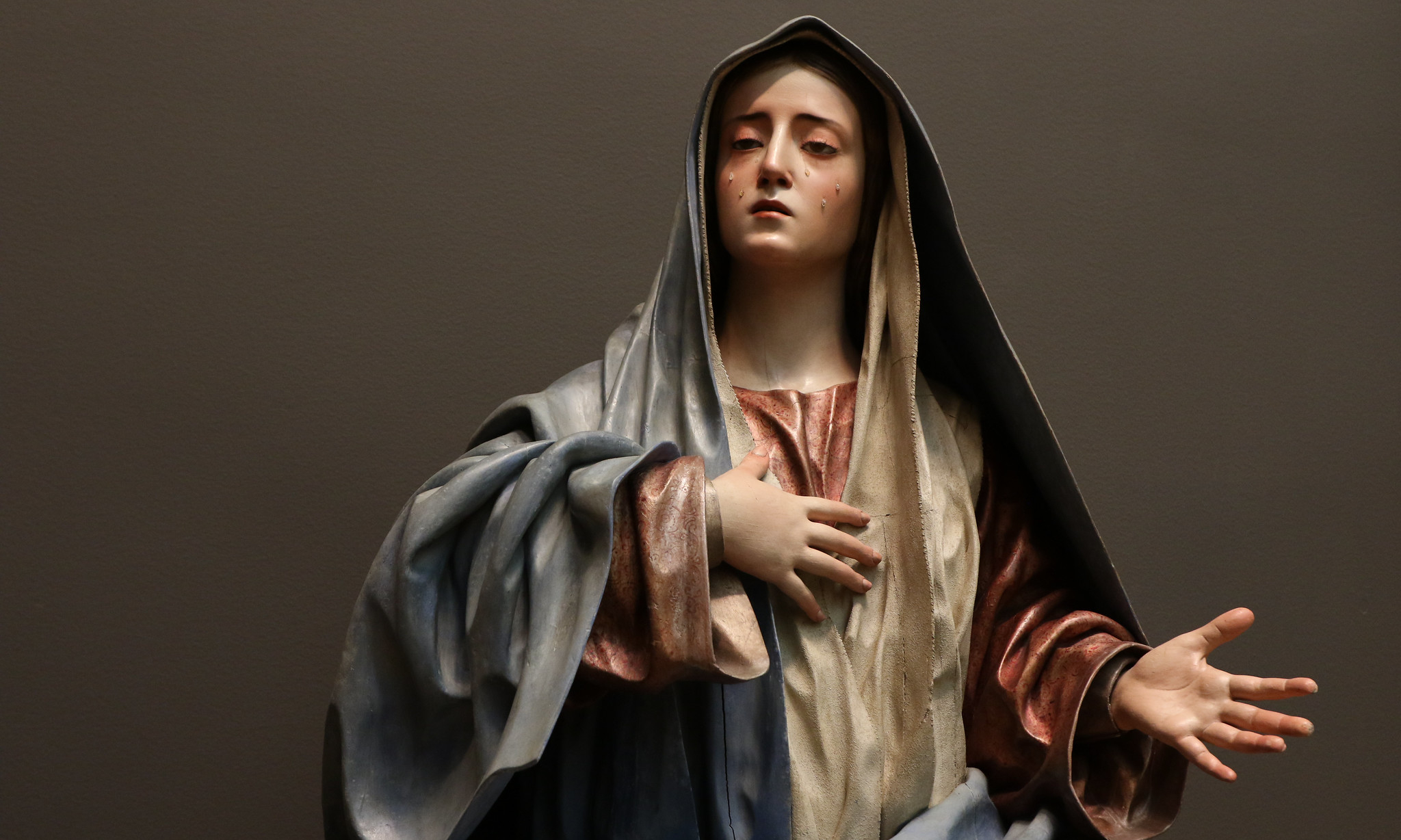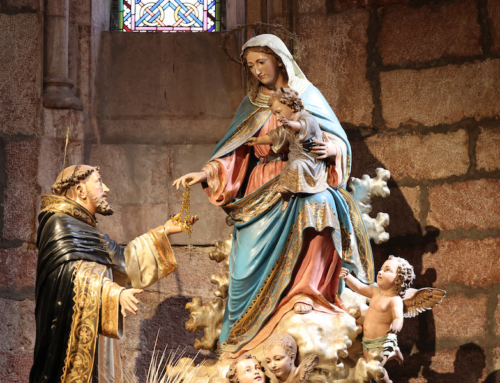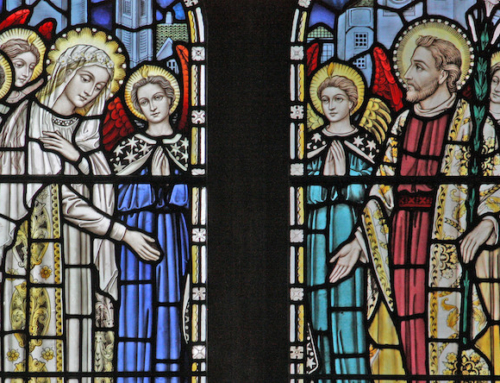The love that a suffering mother has for her child is hard to surpass. The month of September is a time for Catholics to reflect on this aspect of the life of the Blessed Virgin Mary.
The Memorial of Our Lady of Sorrows (celebrated September 15) is traditionally associated with September because of its proximity to the Feast of the Exaltation of the Holy Cross (which is celebrated on September 14). Although the Triumph of the Cross is cause for joy, the faithful may be sorrowful given that the Memorial of Our Lady of Sorrows falls on a Sunday this year , which means that it is not celebrated by most of the Church. When this kind of situation occurs, I often hear, “Oh, I’m sure saint so-and-so won’t mind being trumped by the celebration of the Lord’s Resurrection.” If this assertion would apply to anyone, it certainly applies to the Mother of our Lord.
Such an assertion approaches this ecclesiastical “double-booking” with the disposition of Mary. Perhaps we should follow suit, despite the way the Church Calendar falls. In doing so, I think there is a great lesson to be learned from this fortuitous conjunction between the tears of Mary and the triumph of her Son.
Another Memorial that was recently suppressed by Sunday is the Nativity of the Blessed Virgin Mary (September 8). This detail is no coincidence since Our Lady of Sorrows is placed exactly one week after the Church celebrates her birth. In this mark of the Church’s wisdom, we are reminded that the life of Mary—even from the beginning—is intimately connected with the saving work of her Son, culminating in the Cross. Her life, therefore, teaches us many things. Of course, she teaches us how to identify our sufferings with the sufferings of Christ. Doubtless there are plenty of opportunities to remember this when we see the current sufferings of Christ’s Body that is the Church.
Apart from this, the life of the Blessed Virgin Mary shows us a remarkable exchange between sorrow and joy. The suffering of Mary is inseparable from the Cross of her Son. We see that the Church upholds this when she remembers the Sorrowful Mother the day after she joyfully celebrates the Triumph of the Cross. In our Lady, triumph and sorrow meet in a perfect and beautiful way. Her arms bear the scourged and crucified body of her Son, while the Father receives his Son as a worthy oblation for our sins. Although she is heartbroken, her heart remains open to the glory that is to come. In the midst of her mourning, her Magnificat rings true: “He has helped Israel his servant, remembering his mercy, according to his promise to our fathers, to Abraham and to his descendants forever” (Lk 1:54-55).
We can see, then, that it is actually quite appropriate for Our Lady of Sorrows to be “trumped” by Sunday. Her sorrow offers us a precious lesson in seeing Christ’s work of redemption in the midst of suffering. Mary teaches us to rejoice in this “happy fault” and to be moved with sorrow for our contribution to the sufferings of Christ. May the intercession of our Blessed Mother enable us to love as she did, with the expectation of triumph over and with sorrow for the sins of the world—including our own.
Mary, Mother of Sorrows and Mother of Joy, pray for us!
✠
Photo by Fr. Lawrence Lew, O.P. (used with permission)







